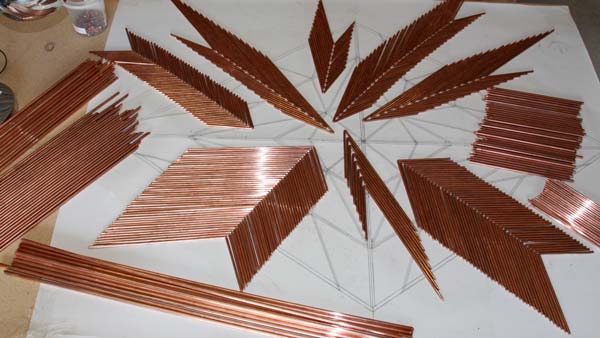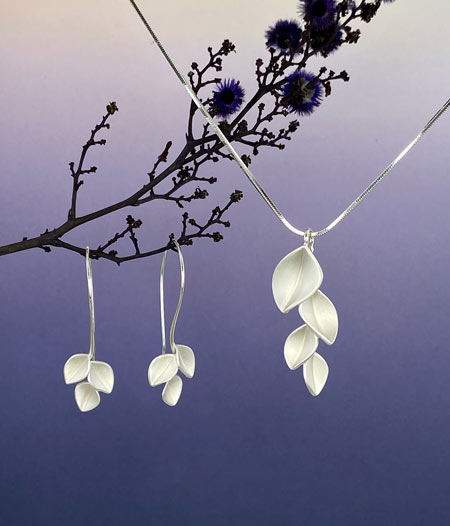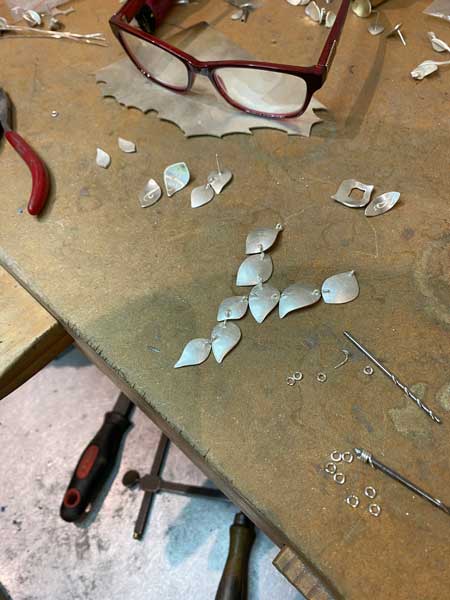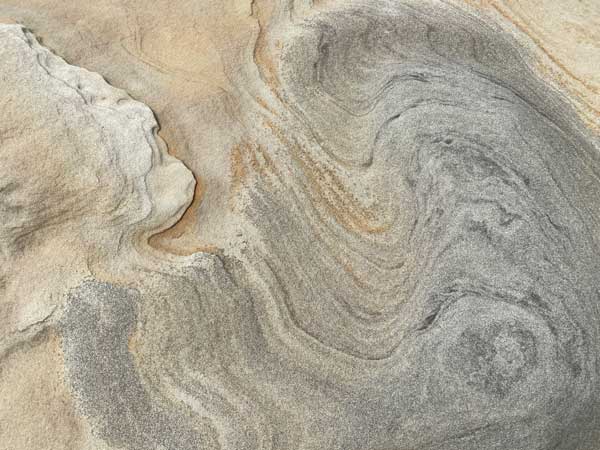

I get inspiration from the most unusual places, not just obvious sources like nature. Walking through a hardware shop once I saw a trowel that would make a fabulous earring shape. I spend a lot of time photographing all sorts of things and frequently get strange looks from passers-by for photographing wheel covers on cars or cracks in pavements; I just can’t help myself.
I store all these ideas in my mind and eventually they may be used as inspiration for new designs. It can take many years for me to develop a new line of jewellery as I never compromise on the design. If something isn’t quite right, I will put the idea aside and return to it months or even years later. I pay great attention to detail in my work, and all aspects of the design must be fully resolved before I’m satisfied enough to make the final piece. I have been holding onto my mother’s silver jam spoon for years and finally now the shape is evolving into a new collection, she will be happy to have her spoon back! The creative process usually begins with sketching and model making, then experiments in copper or aluminium before manufacturing the piece in precious metal.

Different collections are made in different ways; collections like Leaf and Spiral are complex multi-step processes. I start by using copper sheet to create basic leaf and spiral shapes, then I solder them together into 3-dimensional forms. Using copper for this stage has several advantages. It has a higher melting temperature than silver; this allows me to use multiple temperature grades of solder and have many joins close to each other. It also means I can create many pieces with subtle differences in curves and shapes. (Silver is so expensive!)
I can then start selecting pieces with exactly the right shapes and curves to solder together to create a unified whole. I then have a mould made, to have the piece cast in solid silver, which then needs further filing, shaping and soldering to achieve the finished piece.
Pebble and Seashell are made mostly by hand; by cutting, filing and shaping sheet metal. I then solder the forms together and solder on jump rings to link the pieces together.
Jellyfish and Liquid Silver are made completely differently; by shaping, curling and spiralling wire from which multiple pieces are then cut and linked together to create movement with the addition of pearls and gems. Individual jump rings and briolette gems are attached using a micro-pulse arc welder.
Sometimes I use the lost wax process. This involves carving a shape in wax, which is sent to a precious-metal caster who creates an investment mould around the wax. The wax is then melted away leaving a cavity (the lost wax) and molten precious metal is poured in to fill the cavity.
I have also taken on a new challenge (to say the least) in the last couple of years, learning CAD or 3D computer-aided design. Not so easy at my age, since the maths brain is not what it used to be, and the calculator must work overtime. While I am still in a self-taught learning phase I expect it will open a realm of new design possibilities not possible using traditional techniques.

By creating quality jewellery that is made to last, I feel that in a small way I am contributing to helping the environment and reducing landfill. Jewellery which is timeless and not driven by passing fashion, can be worn year after year. Some of the designs I made 20 years ago are still in high demand today. My precious metal is only sourced from three Australian companies which are all certified members of the Responsible Jewellery Council...
This means that you can be assured that the materials used in my work are sourced via supply chains that adhere with the RJC’s strict Code of Practice for environmental performance, human rights, social impacts and business ethics. Essentially all metals are traceable from mine to retail. In addition to this I recycle as much of my precious metal as is practicably possible, and as the sole manufacturer of my work there is no one to exploit except myself!
